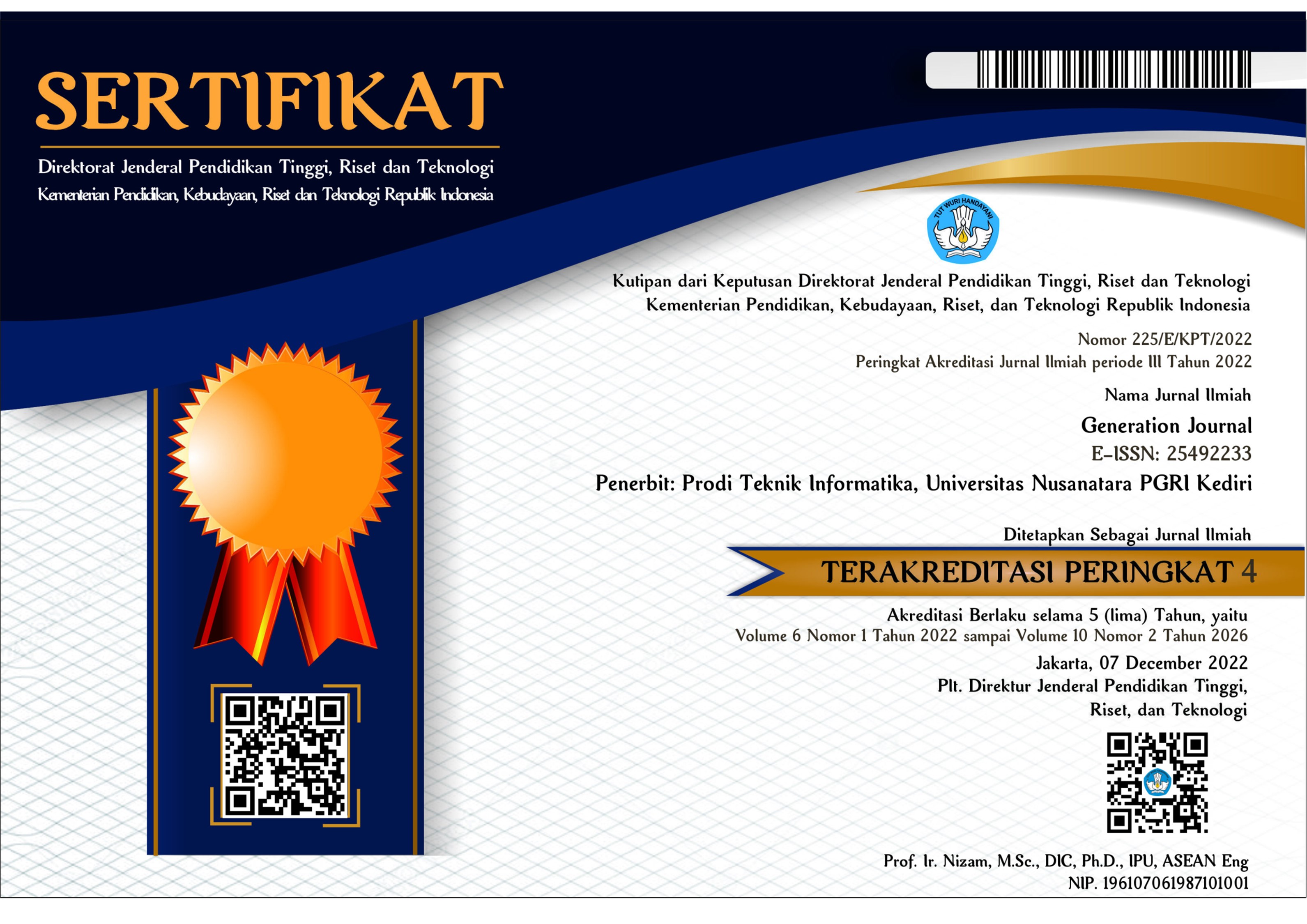Penerapan Metode SAW Dalam Menentukan Juara Lomba Kategori Vocal Group Di LPPN
DOI:
https://doi.org/10.29407/gj.v7i3.20864Keywords:
Decision Support System, SAW, Vocal GroupAbstract
The history of vocal music is very old. Even some experts believe that humans have started singing before they began to communicate with modern languages. Popular vocal music as we know it today is rooted in the traditions of European society in the Middle Ages. It was only the middle ages that everything progressed in a more modern direction. A decision support system (DSS) is a part of a computer-based information system that is used to support decision making in determining the best alternative within a particular company or organization and can also be used to rank in determining championships when carrying out various competitions. In this study, the authors used the SAW method to determine championships in vocal group activities held by the National PESPARAWI Development Institute (LPPN). This SAW method is the SAW method which is one of the best methods for ranking based on the different attributes and weights of each participant so that the results are more effective
References
A. A. Herdianto, M. Sarjoko, S. Sn, and M. Pd, “PEMBELAJARAN EKTRAKURIKULER VOKAL GRUP DI SMP KRISTEN YBPK SIDOREJO, PARE-KEDIRI SEBAGAI SARANA PENINGKATAN PRESTASI SENI MUSIK,” 2014.
T. Limbong et al., Sistem Pendukung Keputusan: Metode & Implementasi. 2020.
And A. I. D. C. Hartini, E. L. Ruskan, “Sistem Pendukung Keputusan Pemilihan Hotel Di Kota Palembang Dengan Metode Simple Additive Weighting (SAW),” vol. J. Sist. I, 2013.
And N. K. D. Mesran, E. P. Sumantri, Supriyanto, S. H. Sahir, “No TitImplementation of Technique for Order Preference by Similarity to Ideal Solution (TOPSIS) in Recommendations for New Position in Companies,le,” vol. Int. J. In, 2021.
F. Br Sembiring, “Penerapan Metode Multi-Objective Optimization on The Basic of Ratio Analysis (MOORA) Dalam Penentuan Karyawan Terbaik,” 2022. [Online]. Available: https://ejurnal.pdsi.or.id/index.php/jurtidas/index
G. A. Gora and E. Santoso, “‘Seleksi Anggota Paduan Suara Menggunakan Metode Fuzzy Tsukamoto dan Simple Additive Weighting (SAW),’” J. Pengemb. Teknol. Inf. dan Ilmu Komput. Univ. Brawijaya, vol. 2, no. 8, pp. 2497–2502, 2017, [Online]. Available: http://j-ptiik.ub.ac.id/index.php/j-ptiik/article/view/1815
D. M. Mulya and A. W. Sudrajat, “Sistem Pendukung Pengambilan Keputusan Pemilihan handphone Dengan Metode Saw (Simple Additive Weighting) Di Toko Vicdan Cell 2,” Julyxxxx, vol. x, No.x, pp. 1–5.
A. Amarullah and T. S. Saragih, “Penerapan Algoritma Simple Additive Weighting (Saw) Dalam Sistem Pendukung Keputusan Kelanjutan Proyek Pada PT XYZ,” J. Sisfokom (Sistem Inf. dan Komputer), vol. 8, no. 2, pp. 184–190, Aug. 2019, doi: 10.32736/sisfokom.v8i2.640.
Y. J. S. and W. Marna, “Sistem Pendukung Keputusan Pemilihan Bayi Sehat le,” J. Edik Inform. pp. 88–94, vol. 2, 2017.
S. Lestari and Y. Kusumah, “Penerapan Metode Simple Additive Weighting (SAW) Dalam Sistem Pendukung Keputusan Pemilihan Calon Peserta Pelatihan Kepemimpinan Pengawas Bagi Pejabat Struktural,” J. Comput. Syst. Informatics, vol. 3, no. 4, pp. 438–443, Sep. 2022, doi: 10.47065/josyc.v3i4.2161.
B. N. F. Nugraha, B. Surarso, “Sistem Pendukung Keputusan Evaluasi Pemilihan Pemenang Pengadaan Aset dengan Metode Simple Additive Weighting (SAW),” J. Sist. Inf. Bisnis, vol. no. 2, p., 2012.
N. Khairani Daulay, “Implementation of Simple Additive Weighting (SAW) and Weighted Aggregated Sum Product Assessment (WASPAS) Methods in Selection of Young Lecturers with Achievements,” Int. J. Inf. Syst. Technol. Akreditasi, vol. 5, no. 1, pp. 84–92, 2021.
N. F. and Subiyanto, “Sistem Pendukung Keputusan Menggunakan Metode Saw,” J. Kependidikan, vol. 44, pp. 139–145, 2014.
J. H. L. F. P. Hutagaol, Mesran, “Penerapan Metode Simple Additive Weighting (SAW) dalam Pemilihan Handphone Bekas,” Bull. Inf. Technol, vol. 2, no. 2, no. 2021, pp. 63–68,.
M. R. Y. Simanullang, Melisa, “Sistem Pendukung Keputusan Penerima Bantuan Covid-19 Menggunakan Metode Simple Additive Weighting (SAW),” TIN Ter. Inform. Nusant, vol. 1, no, pp. 2–9, 2021.
Downloads
Published
Issue
Section
License
Authors who publish with this journal agree to the following terms:
- Copyright on any article is retained by the author(s).
- The author grants the journal, the right of first publication with the work simultaneously licensed under a Creative Commons Attribution License that allows others to share the work with an acknowledgment of the work’s authorship and initial publication in this journal.
- Authors are able to enter into separate, additional contractual arrangements for the non-exclusive distribution of the journal’s published version of the work (e.g., post it to an institutional repository or publish it in a book), with an acknowledgment of its initial publication in this journal.
- Authors are permitted and encouraged to post their work online (e.g., in institutional repositories or on their website) prior to and during the submission process, as it can lead to productive exchanges, as well as earlier and greater citation of published work.
- The article and any associated published material is distributed under the Creative Commons Attribution-ShareAlike 4.0 International License













